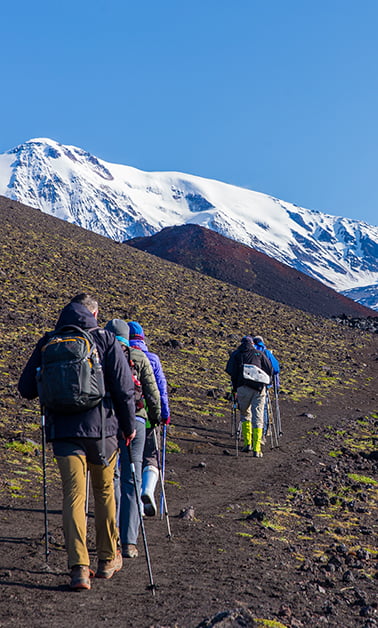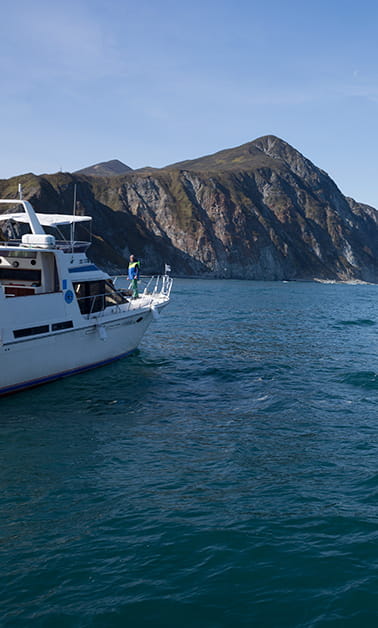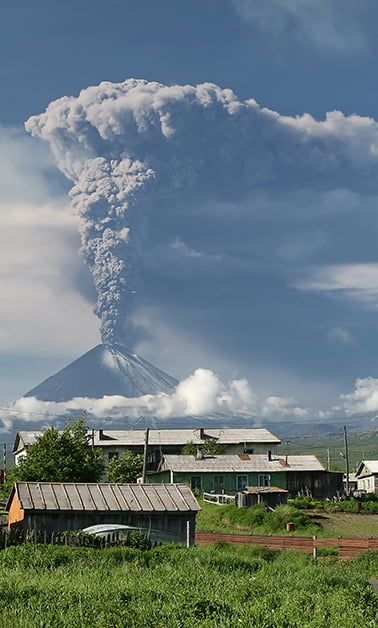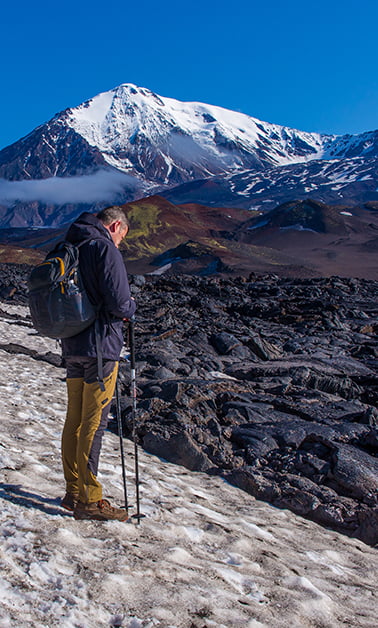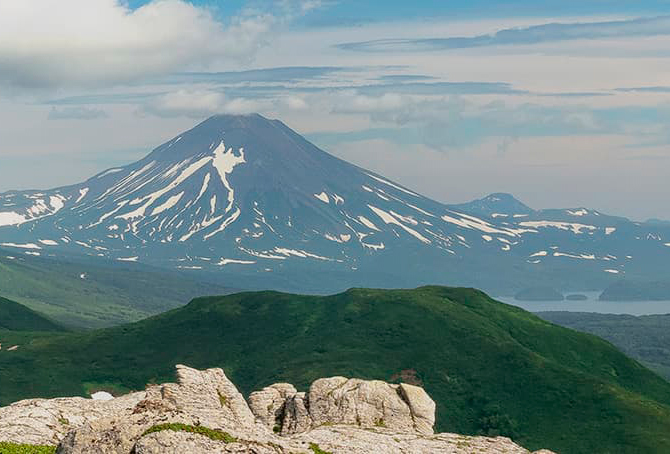
Klyuchi village
The village of Klyuchi, located in the Kliuchevsky Nature Park, is the place where routes to the most beautiful places of Kamchatka start. The Volcanological Station of the Institute of Volcanology of the Far Eastern Branch of the Russian Academy of Sciences also operates here
Cossack pathfinders, who explored Siberia in the XVII-XVIII centuries, would have come to Kamchatka sooner or later. And so it happened. Having arrived there, they founded burgs, and one of them was Nizhnekamchatsk. In 1731, Kamchadals rebelled because of too high tribute paid off in furs. Cossack Feodor Kharchin led the rebels. As a result of the riot, wooden Nizhnekamchatsk was burned to the ground. The revival of the village is associated with the name of the sotnik (captain) Timofei Kobelev. The Cossacks, whom he brought to these lands from the banks of the Lena River, in 1740, built a new burg on the old site.
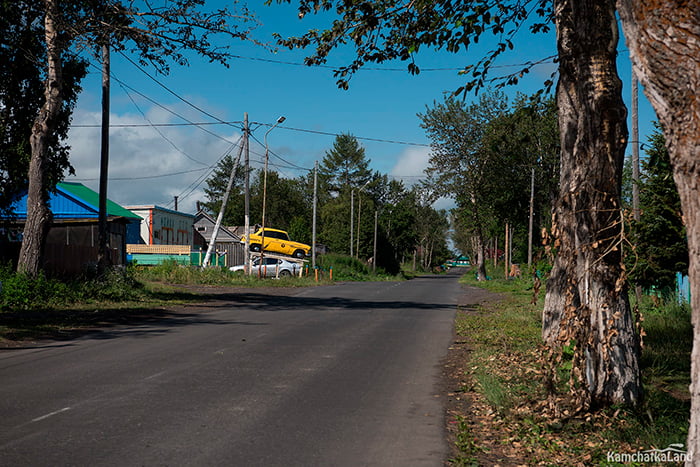
The original name of the settlement was changed to Klyuchi thanks to the Klyuchovka River, which, in turn, was named so because of the thermal springs nearby. They did not freeze even in winter, so it was quite convenient to live next to them. The village is surrounded by mountains, among them amazingly beautiful Klyuchevsky volcano attracts your attention. Nearby, there is a mouth of the Krutenkaya River. Now the population of the village is not more than 5,000 people.
Klyuchi in the Soviet era
In the Soviet era, Kamchatka was actively explored. In 1935, the Volcanological station of the Institute of Volcanology and Seismology, Far Eastern Branch of the Russian Academy of Sciences opened in Klyuchi. Having survived all the twists and turns of history, it still operates.
In the vicinity of the village in 1955, the Kura missile range was created. As it is a military facility, its location was not advertised, the range was located in a deserted place, among swamps. Initially, it belonged to the Strategic Missile Forces, now it is assigned to the Space Forces. The range activity, for obvious reasons, is high-security. In the Soviet era, they carried out test launches of ballistic missiles here. Lunokhod, before launching on the Earth’s satellite, was tested here, as well.
In the Soviet era, the economy developed in Klyuchi. Mostly, it was the timber industry, spruce and larch wood was harvested. The majority of the population (actually 70 %) was employed in this sector, they worked triple shift. The forest was exported to Japan. After the Reformation period, the timber industry enterprise ceased to exist, there was no work, and this was the main reason why many people left Klyuchi.
Agriculture was also developed there. A variety of vegetables were grown at the farm firm; the harvest was rich. Animal breeding was developed, as well, there were cattle. Fishing was put on an industrial basis. Now all this has sunk into oblivion, fields overgrown, farms have been closed.
The current state of Klyuchi
In 2004, Klyuchi changed the city status for the status of a village. Although the timber industry and farm firm ceased their activities, the life in Klyuchi did not stop. The basis of the local budget is now tourism. There are many tourists here in summer. The attraction of the village is stunning natural monuments of Kamchatka.

Ust-Kamchatsky District, to which the village belongs, is the territory of a Natural Park. There are impressive in size and beauty and active volcanoes of Klyuchevskaya group, Shiveluch, Plosky (flat) Tolbachik, and others. The distance from Klyuchi to Klyuchevskaya Sopka is about 30 km. Therefore, all routes heading to the mountains start in the village. In addition, the proximity of the river that never freezes (thanks to the underground thermal springs) and the opportunities for good fishing attract people here. In winter, you can ski though there are no ski slopes yet.
For the lack of agriculture, local residents began to beekeeping, and they were very successful. Tourists take the fragrant honey of these apiaries very willingly. Klyuchevsky dried crucians, a local food attraction, are also famous throughout the region.
Extant transport network helps local tourism to develop. The distance to the capital of the region is 642 km, and the village is connected with it by road. The airport operates but accommodates only carrier aircraft (there used to be passenger service). You can get to other settlements by river, as well. It was much easier to communicate with the regional center located across the river thanks to the bridge over the Kamchatka River that was built in 2014.
The appearance of the village is not striking in its originality or beauty. Houses are not higher than five floors; one-story wooden houses prevail. Many destroyed buildings that no one demolishes so that they do not spoil the view. An attractive center of the village is the House of Culture with various workshops and even a puppet theater. Another cultural and educational institution is a library, which is a small museum at the same time. Among the exhibits, there are antiques, there is a separate exposition dedicated to the Great Patriotic War.
Despite the modest appearance of the village, travelers who come here feel a specific pretty atmosphere that makes them fall in love with the place. Situated among the majestic, untouched beauties of nature, the small village holds promise for further development in tourism.
Popular tours with Kamchatkaland
Ready-made packages for your travel and vacation in Kamchatka

